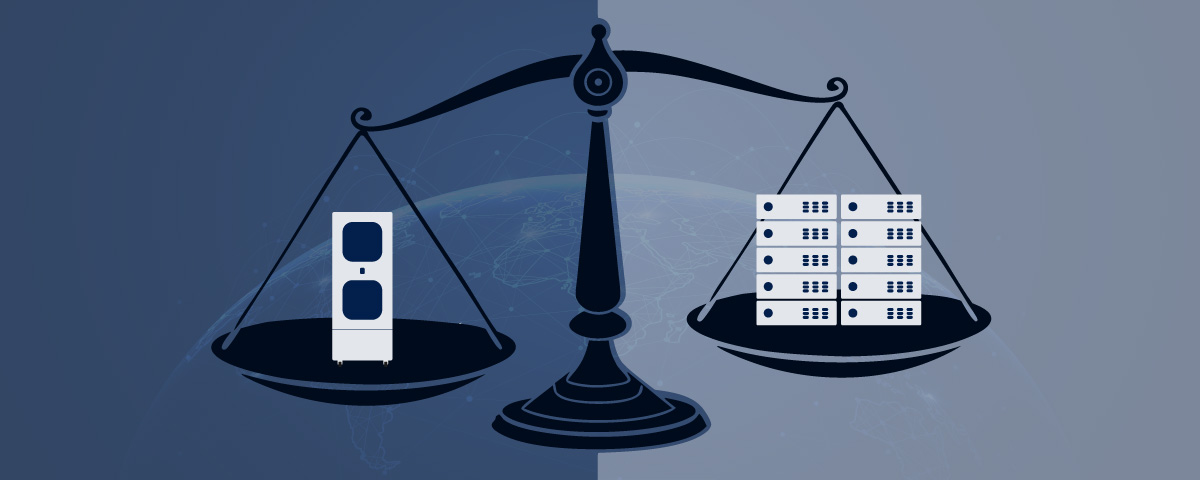IT infrastructure can be expensive, not just to build, but to run, scale, maintain and move. Traditional data centres are resource-intensive, slow to deploy, and often overbuilt to account for future growth.
Micro data centres offer a smarter, leaner way to manage IT at the edge. Compact, self-contained, and fully equipped with power, cooling, and security features, they reduce both capital and operational costs over time. Here’s how.
1. Lower upfront capital costs (CAPEX)
With a micro data centre, there’s no need to build or retrofit an entire server room. These units come pre-configured and ready to deploy, eliminating the costs associated with construction, custom design, or lengthy installation processes.
You can start small and deploy only what you need, when you need it, avoiding the large, upfront investments associated with traditional infrastructure builds.
2. Reduced ongoing operating costs (OPEX)
Micro data centres are designed with efficiency in mind. Integrated precision cooling systems and power management reduce energy consumption, lowering electricity bills.
They also require less hands-on maintenance. With built-in monitoring, alerts, and remote access capabilities, your team can manage infrastructure with fewer site visits and less manual intervention.
3. Scale as you grow, avoid overbuilding
Traditional facilities often force you to plan (and pay) for capacity you may not use for years. Micro data centres offer a modular approach: deploy a single unit today, and scale up incrementally as your needs grow.
This approach reduces waste, improves cash flow, and makes it easier to match IT spend with real-world demand.
4. Minimised downtime and risk-related costs
Downtime is expensive. Micro data centres come with built-in resilience features including UPS systems, secure access control, and smart sensors for environmental monitoring.
By processing data closer to where it’s generated, they also reduce latency and the risk of service interruption due to network outages. The result? Lower risk, fewer disruptions, and greater uptime.
5. Better lifecycle value
Zella DC micro data centres are engineered for durability. With IP65-rated enclosures, they’re protected from dust, water, heat, and vandalism. This level of resilience translates to a longer lifespan, even in harsh environments.
Instead of replacing infrastructure every few years, micro data centres deliver reliable performance over the long term, significantly improving your return on investment.
6. Cheaper and easier to relocate
One of the hidden costs of traditional IT setups is relocation. If a site closes or moves, server rooms must often be decommissioned and rebuilt from scratch.
Micro data centres eliminate this problem. As self-contained, portable units, they can be moved from one location to another with minimal effort and expense. For industries with temporary, mobile, or remote operations, such as mining, defence, or telecom, this is a major cost advantage.
Why cost-saving is just the beginning
Micro data centres don’t just save money upfront, they continue to reduce costs across their entire lifecycle. From energy efficiency and reduced maintenance to scalable deployments and easy relocations, they offer a flexible, future-proof approach to managing IT.
For any organisation looking to modernise its infrastructure while controlling costs, micro data centres are a powerful alternative to traditional models.






